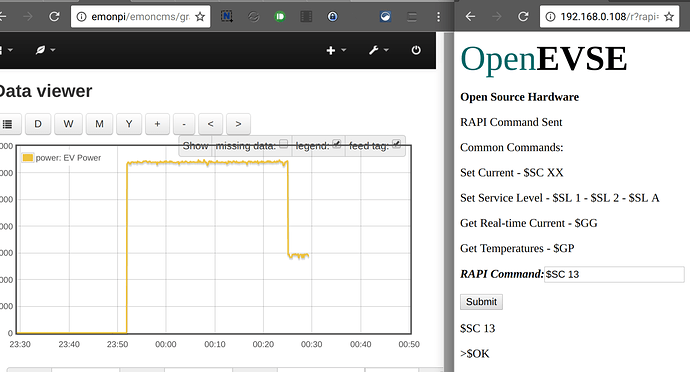@cab123 I have taken a look at your EV charge controller thread. I really like what you have done with MQTT. I am going to try and do the same using OpenEVSE
The OpenEVSE ESP8266 posts to emoncms (well http://data.openevse.org Emoncms instance by default) all the time.
OpenEVSE has the ability to control the charging current via RAPI commands, see example of using the openEVSE web interface (running from an ESP8266) to reduce the charge rate to 13A. The graph on the left shows the current being drawn by the EVSE reducing as a result of the RAPI command `$SC 13’
Do you agree if the RAPI commands could be set via MQTT it would make openEVSE very flexible and easy to integrate with nodeRED control algorithms? This would not be too difficult to add.
How about this as an idea for a possible MQTT topic structure:
topic to set current: openevse/control/current
topic to read current current openevse/status/current
